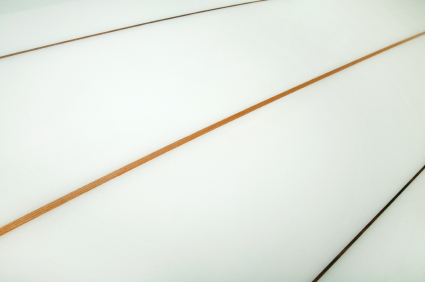Stringer
Types Of Wood Used For Stringers
 Surfboard shapers are experimenting with stringers more than ever before. But still, the tried and true standard is the wooden stringer. These wooden stringers offer strength and controlled flex to the relatively weak foam and fiberglass material most commonly used in surfboard construction. We can see stringers down the middle, near the rails, and now even on the rails, but regardless of placement, the materials used play a big part in determining how the surfboard will flex. So, which stringers offer the best strength to weight ratios, increasing the lifespan of our boards?
Surfboard shapers are experimenting with stringers more than ever before. But still, the tried and true standard is the wooden stringer. These wooden stringers offer strength and controlled flex to the relatively weak foam and fiberglass material most commonly used in surfboard construction. We can see stringers down the middle, near the rails, and now even on the rails, but regardless of placement, the materials used play a big part in determining how the surfboard will flex. So, which stringers offer the best strength to weight ratios, increasing the lifespan of our boards?
Common Wood Types For Stringers
Four of the most common wood stringers used to strengthen our boards are Balsa, Basswood, Western Red Cedar, and Englemann Spruce. As with all surfboard materials, desirable stringers are lightweight, meaning low density. When taking this into consideration it becomes clear why Balsa became a favored material. According to WaveEquation.com, Balsa is .16 as dense as water, making it very buoyant and half as dense as the other three woods.
Flex vs. Strength
One extremely important aspect to the art of surfboard shaping is balancing flex with rigidity. Flex allows a material to bend without breaking, store energy, return to its original shape, and release the stored energy. This sequence has captured the attention of those interested in surfboard design over the past couple of years. We mention this because a common downside to low density is low stiffness, or increased flex. A flexible stringer is OK as long as it plays by the rules and doesn’t bend far enough to damage a surfboard’s fiberglass. Freshly cut Western Red Cedar has the next lowest density relative to water at .31, but it is almost twice as stiff as Balsa. This strength may offer design advantages to your shaper or glasser that would be worth a conversation.
Conclusion
In an effort to find the lightest and strongest stringers, WaveEquation.com created its own measurement of pound for pound strength, which it calls “Specific Stiffness”. This measurement, which divided the woods’ densities relative to water by their stiffness, suggests that Basswood, Englemann Spruce, and Western Cedar (in that order) all combine low density with increasingly higher strength. If your shaper uses blanks with these stringers then he must appreciate the stiffness and buoyancy of these woods. As a surfer looking for the strongest and lightest board available you should, too.















0 Comments